So your vet mentioned something called a cat cone. Now, your cat isn't wearing it just yet, but the very idea might have you feeling a bit confused, worried, or even guilty.
Don't worry - it's not as scary as it sounds.
This guide will break down all there is to know about cat cones: why your furry friend might need one, the different types you can find, and how to ensure your cat is comfy if she ends up needing to wear one.
Wondering if you could make one yourself? We've got that covered too. And that question niggling at the back of your mind - "Does my cat really need this?" - we'll get to that as well.
Understanding more about cat cones can help your cat recover without causing any unnecessary stress.
So let's clear up all of your questions surrounding the cat cone - for both your peace of mind and your cat's well-being. Ready to learn more? Let's go.
What Is A Cat Cone?
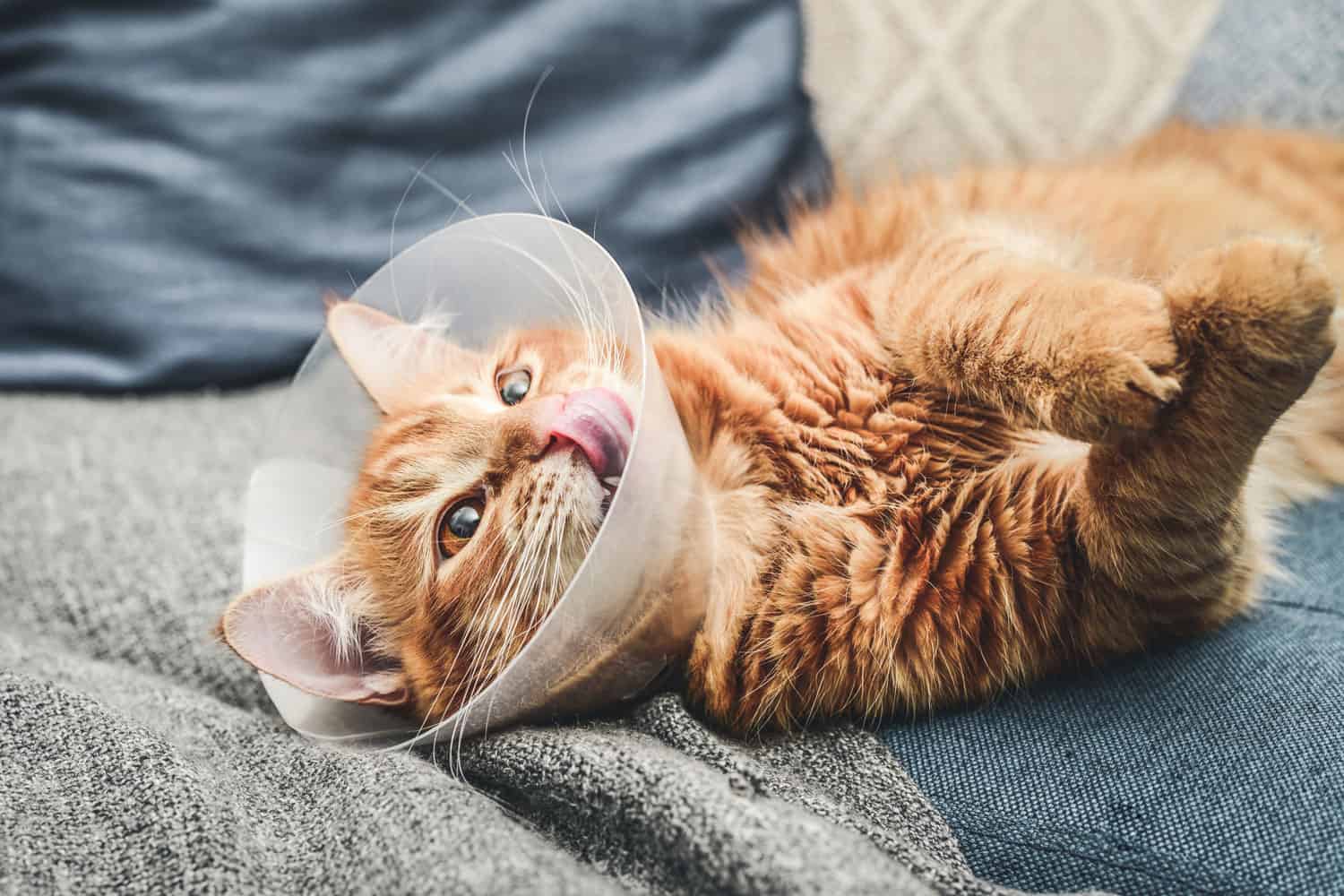
It's a pretty simple gadget, really. It looks like an open-ended cone that wraps around your cat's head.
You might hear it called a few different names. Some people refer to them as Elizabethan collars, E-Collars, or Buster collars.
But let's face it, these things can look a bit funny on our furry friends, so they've earned some nicknames too, like the "cone of shame", "pet radar dish", or the "lampshade".
Back in the day, vets used to make these cones themselves for their furry patients, using bendy plastic sheets or cardboard.
But now, it's super easy to get a cat cone. There are lots of different types you can buy online or from your local pet shop. Some are store-bought and others you can even make at home.
Don't worry - we're going to cover all the different kinds in this guide. Keep reading!
Why Would Your Cat Need A Cone?
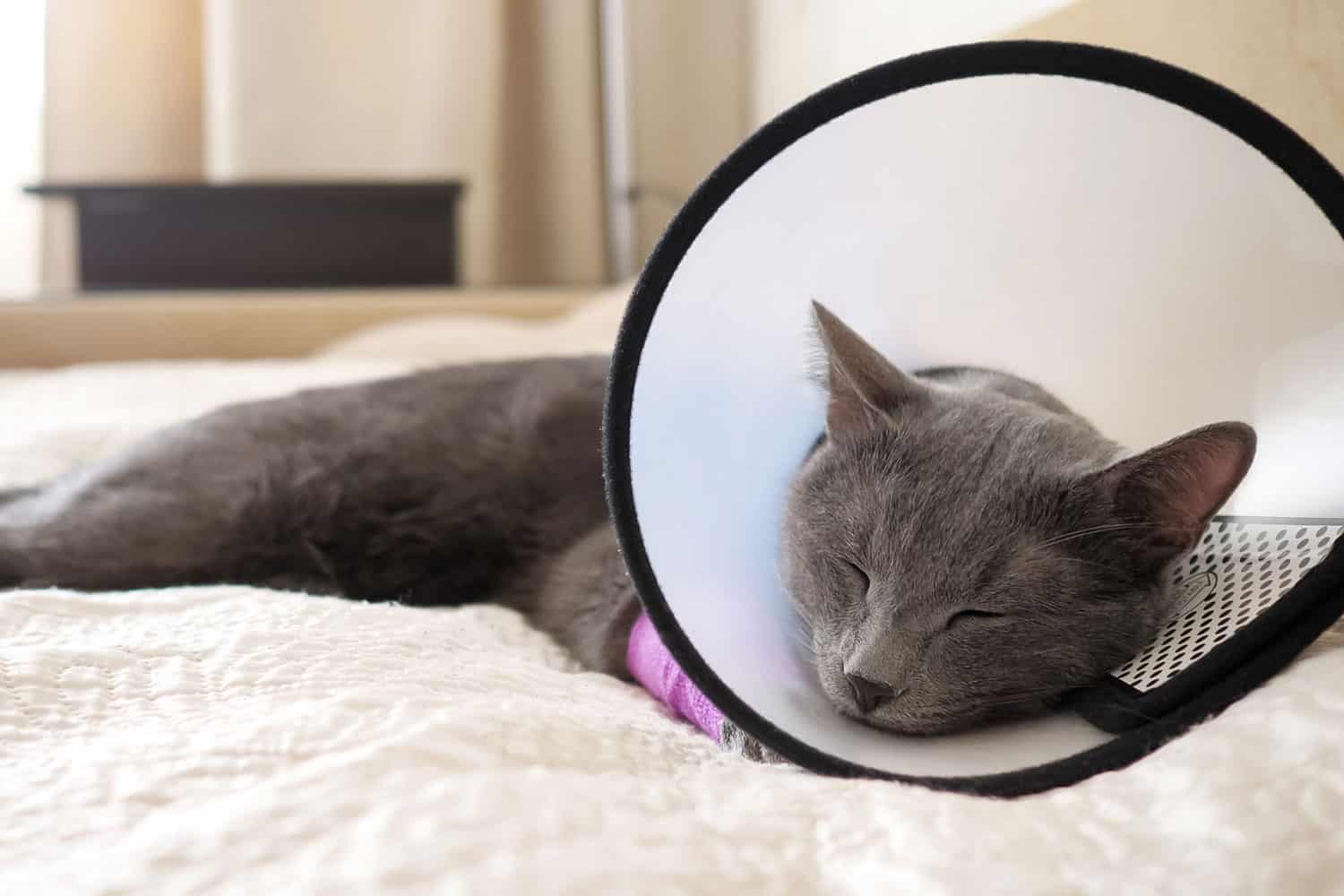
Basically, the cone stops your cat from licking or biting certain parts of her body. Say your cat just had surgery and has stitches - the cone keeps her from chewing at them.
Or if your cat has a habit of grooming so much that she hurts herself, the cone can prevent that too.
The cone can also stop your cat from scratching at her own face. This might be needed if your cat had eye surgery or has a skin problem on her face that she keeps scratching.
But remember, a cat cone isn't a fix-all solution. It's only supposed to be used temporarily, and only when your vet says it's needed.
Don't try to use a cat cone just to stop your cat from scratching her face or licking a part of her body.
It's important to get your furry friend to the vet for a check-up first to find out what's really going on and treat the root cause of the problem.
Does my cat really need a cone?
That's a great question. Because wearing a cone can be uncomfortable and stressful for your cat, it's usually seen as a last resort. Some vets will recommend a cone for any cat that's had surgery, even common procedures like spaying and neutering.
But it might not be necessary. Many cats do just fine without a cone or anything else getting in their way. They might lick their wound, but as long as they aren't biting or tugging at the stitches, it's usually no big deal.
The best thing to do is chat with your vet about your options. After surgery, keep a close eye on your cat. If she starts pulling at her stitches, that's when you might need to use a cone or another method to protect the wound.
But if your cat is just occasionally licking the area without bothering the stitches, she probably doesn't need a cone.
Types Of Cones & Alternatives To Cat Cones
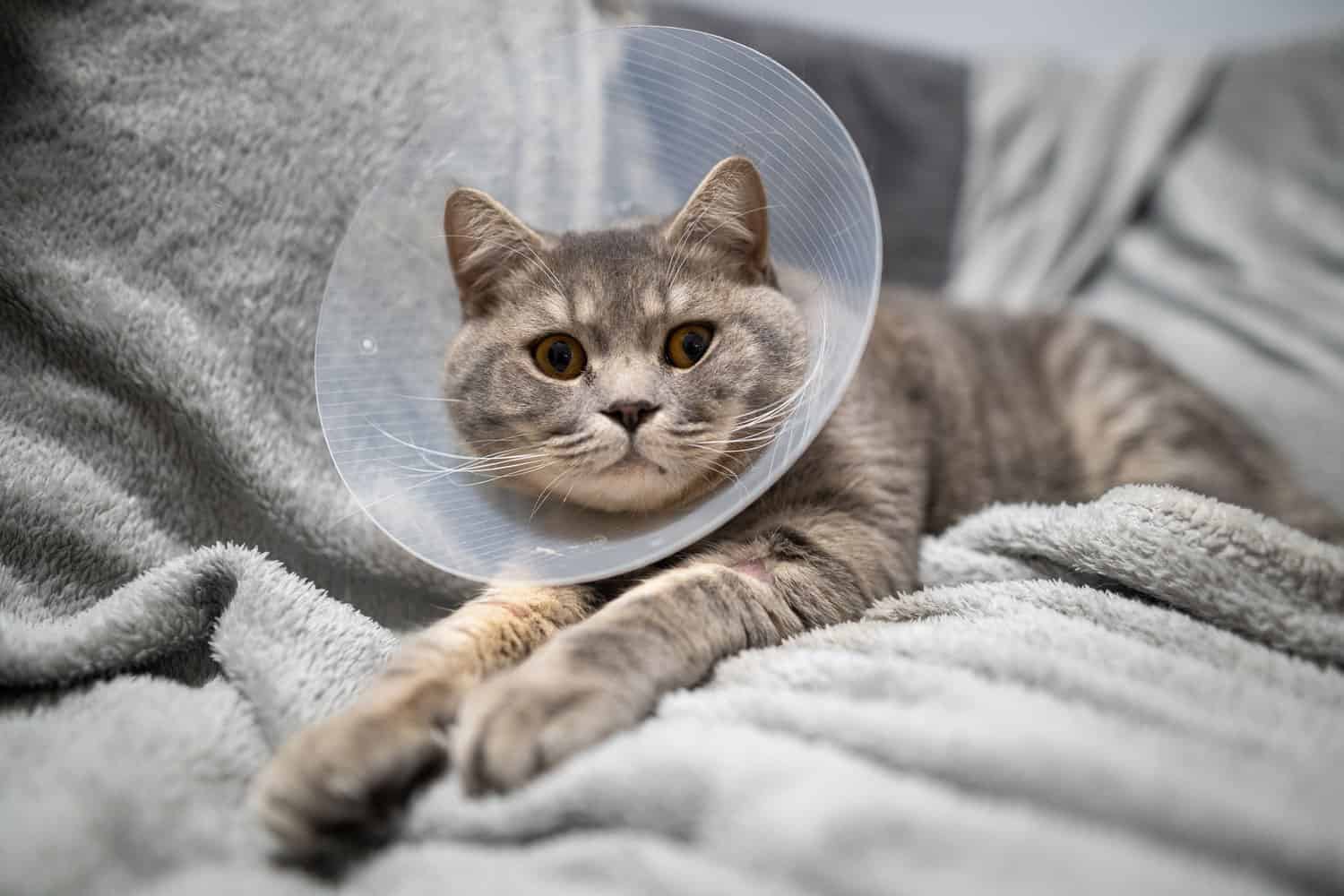
Let's look at different types of cones and some alternatives to cat cones:
A Traditional Plastic Cat Cone
This is the most common type of cone, easily identifiable by its round sturdy shape. Plastic cones come in a variety of colors and designs.
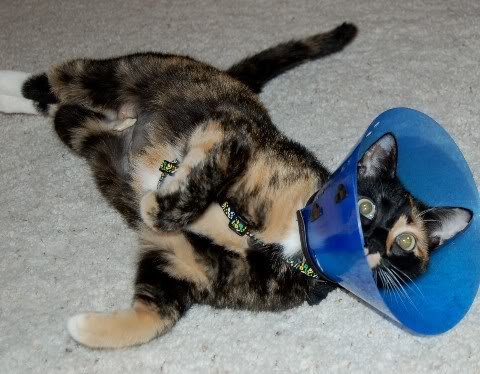
Lucy wearing a plastic cone - submitted by @katachtig
Some plastic cones have a softer edge, covered with fabric, like this one:
See This Cat Cone On Amazon Here
If you can, try to get a see-through plastic cone. It lets in more light and can help the cat manage its surroundings better.
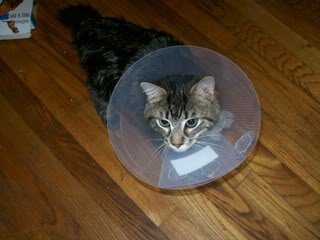
Hatchet in his plastic cone - submitted by 709Juggalette
Talk to your veterinarian about trimming the edges of the cone. This may prevent some of the unwanted behaviors while allowing your cat a better view and ease of movement.
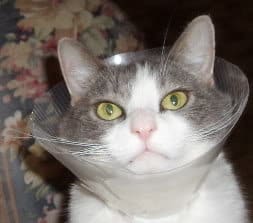
Sadie showing off her trimmed cone - submitted by xocats
SIGN UP FOR THECATSITE'S EMAIL UPDATES >
Soft Cones For Cats
Made of foam and covered with colorful fabric, this soft version of the cone may be more comfortable for some cats. Others may manage to fold the cone by pressing it against a hard object, thus rendering it ineffective.
See This Soft Version Of A Cone On Amazon
Fabric Cones
Some cats do well with a soft pliable cone like EZ Soft Pet Collar.
It comes with its own drawstring, but TCS members comment that it's best to attach it to a proper cat collar as many cats don't like the feeling of a string around their necks.
See This EZ Soft Pet Collar On Amazon
Inflatable Cat E-Collars
Inflatable cones are soft donut-shaped Elizabethan collars like this one by Kong. They're lightweight and less obstructive than traditional cones but aren't as limiting as the traditional plastic cone, so may not always be suitable.
See This Kong Cat Collar On Amazon
Creative Alternatives To Cat Cones:
The Paper Plate
You might be surprised to know that you can make a DIY cone at home. Some vets still recommend the old-school method of using a large paper plate as a makeshift Elizabethan collar.
It's budget-friendly and easy to find, though some cats might manage to shred the paper.
Lola with her homemade paper plate e-collar - submitted by @digitalsyrup
Post-Surgical Jacket And Recovery Suits
Sometimes, you don't have to resort to the dreaded cone. If you need to protect a spot on your cat's body (not on their face), you could use a specially designed garment instead.
These jackets, sleeves, or suits are usually less stressful for cats than a traditional cone.
There are several commercial options, like this one by Suitical -
See This Post-Surgical Jacket by Suitical On Amazon
For homemade versions, our members have used baby onesies.
[Cezare wearing a onesie Posted by @darlenam8]
Or even used a sleeve from an old T-shirt. Find a stretchy T-shirt, cut off the sleeves, and carefully pull it over your cat's body.
What's the best choice for your cat? Well, it depends. If you're trying to stop your cat from licking or chewing a spot that can be covered by a "suit," that's probably your best bet.
It won't restrict your cat's movement or interfere with eating or drinking. But if you need to protect their face from their claws, a cone is likely your only option.
What To Expect When Your Cat Wears A Cone
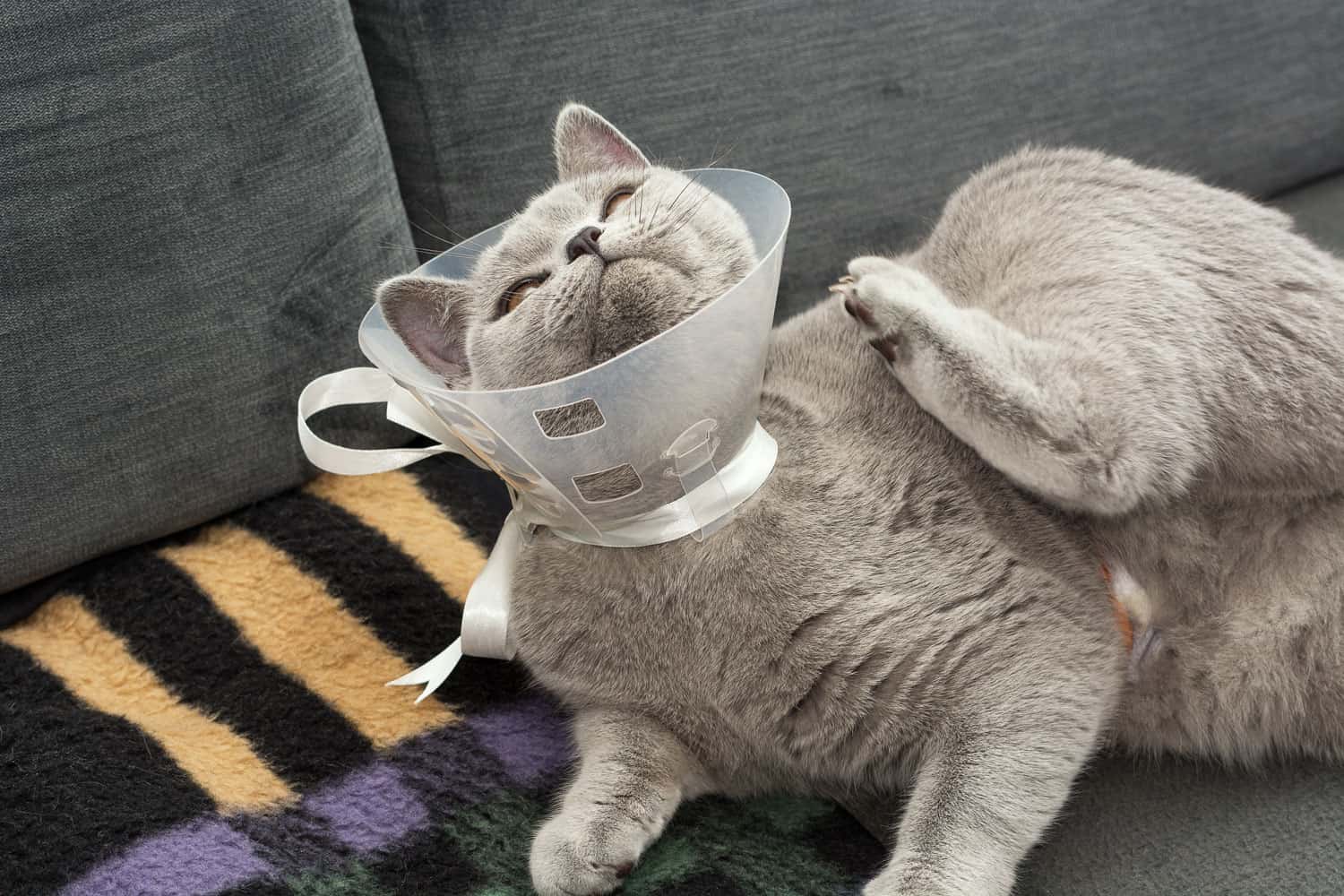
Let's be real: cats and cones aren't a match made in heaven. Most cats detest having a cone around their neck, and there's usually a period of getting used to it. In the first few hours, many cats struggle to walk with the cone.
Some backpedal, others bump into walls. Some cats just give up walking and resort to crawling or dragging themselves around. Be patient and give your cat time to adjust to their new accessory.
Keep a close eye on your cat during the initial hours. Make sure the cone is doing its job and keeping your cat from licking, chewing, or scratching the trouble spot.
Be aware, cats can harm themselves if they try to scratch using a hard plastic cone.
Some cats can worm their way out of the cone, or get stuck in tight spots or under furniture, so keep an eye on them and block off any risky areas.
Even if your cat usually roams outside alone, they need to stay indoors while they're wearing a cone. The cone can affect their vision and hearing, making them vulnerable to outdoor hazards.
How Will My Cat Eat and Drink with a Cone On?
Some cats can still reach their food and water while wearing a cone, but others can't. Monitor your cat's eating and drinking habits during the first day to ensure they're actually able to reach their food and water.
If the cone keeps their face too high, try raising their bowls by placing them on a stable, narrow base. If that's not enough, you might have to trim down the cone.
As a last resort, you'll have to remove the cone for a few hours each day to give your cat enough time to eat and drink.
How Will My Cat Stay Groomed With The Cone On?
Your cat is unlikely to be able to self-groom while wearing the cone. Even a shorthaired cat may need your help during this time. Brush the coat to prevent matting and provide your cat that much-needed skin stimulation.
Our member @Columbine helped her coned cats by scratching the areas they couldn't reach. She suggests drawing an imaginary circle away from the stitches and then scratching gently around that area without putting any pressure on the surgery site.
Remember, this is only a temporary thing! It may be uncomfortable but sometimes it's just unavoidable. The cone can benefit your cat and it won't last forever!
In Conclusion: Ensuring Comfort and Care for Your Beloved Cat
Understanding the ins and outs of cat cones is essential for the well-being of your furry friend.
By exploring the various types of cones available, including traditional plastic cones, soft fabric alternatives, inflatable options, and even creative DIY solutions like paper plates, you can find the best fit for your cat's specific needs.
Remember, a cone should be used as a last resort, under the guidance of your veterinarian.
Monitor your cat's behavior closely during the adjustment period, ensure they can eat and drink comfortably, and provide assistance with grooming as needed.
While it may seem challenging, rest assured that the cone is temporary, serving as a valuable tool to aid in your cat's recovery.
By staying informed and taking the necessary precautions, you can provide the care and comfort your cat deserves.
We're here for your cat and you while the journey lasts, so why not start a thread about your cat's health problem and cat cone adventure in the cat health forum?
SIGN UP FOR THECATSITE'S EMAIL UPDATES >
You Might Also Like:
Your Cat’s Eyes and Vision: The Complete Guide
Stress in Cats – The Ultimate Guide
Note: We may get commissions for purchases made through links on this page.






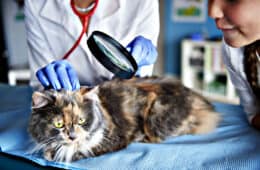
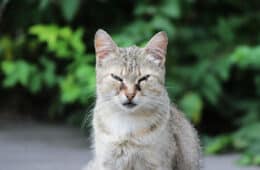
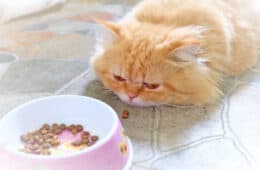
27 comments on “The Cat Cone [A Complete Owner’s Guide]”